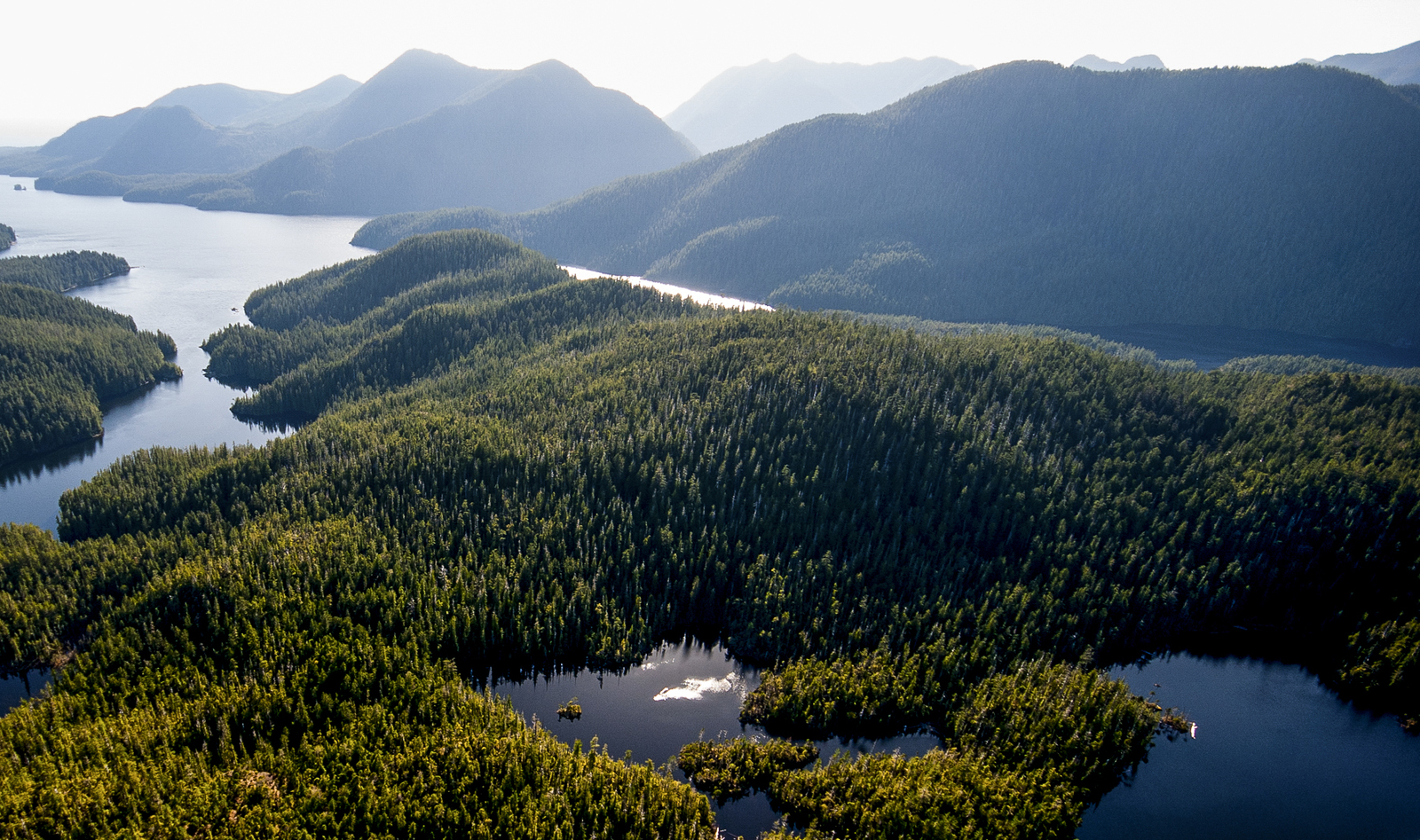By Britta Culbertson, education and outreach manager, Nature Works Everywhere
“The word ‘resource’ is a difficult word for me to use when referring to the entities that give us life, because a resource is an idea from the English language that turns living beings, which we respect, into things that are just taken. This is a consequence of the way that a culture’s worldview can be encoded in its language.”
— Tsimka Martin
About Britta's Trip
Last summer, I traveled to the Emerald Edge to work with a video crew to capture the rainforest and the First Nations people that call it home. My role with The Nature Conservancy’s Nature Works Everywhere program has taken me across the globe. But it wasn’t until I traveled to the Emerald Edge that my curriculum development process turned into more than a job—it became a deeper quest for understanding and marked the beginning of a personal journey.
Through conversations with Tsimka Martin of the Tla-o-qui-aht First Nation in Clayoquot Sound, I learned that I take for granted the meaning that words like “resource” can have for some First Nations people.
In the world of conservation, we freely use the word because our work essentially focuses on conservation and management of resources. For First Nations people like Tsimka, the notion of “respect for all life” is intrinsic to their language and embedded in the culture. In the video “Since Time Immemorial”*, she states that she wants to get away from the ideas of use, resource and benefit and more in touch with the relationships between everything.
About Nature Works Everywhere
The Conservancy’s Nature Works Everywhere initiative is a free, digital education program that brings the science expertise of the world’s largest environmental organization directly into the classroom. To learn more about how students can engage with the topics presented here, visit the Nature’s First Defenders lesson collection on the Nature Works Everywhere website.
For some indigenous communities, conservation isn’t a distinct entity, but a way of existing to ensure nature’s health for future generations. You don’t need to make a special effort to protect something, if respecting it is fundamental to your life in the first place.
My conversations with Tsimka led me to realize that you can’t separate a culture from its language. In some cases, even though we may speak the same language, our words may be imbued with cultural nuances that we may not even recognize. This can make true understanding difficult.
While the notion of differences in language isn’t a profound one, reflection on it reminds me why it’s important to impart to students, our next generation, the value in seeking to understand other people and cultures as well as the need for introspection about one’s own cultural lens. Through the video and lessons we developed, I wanted students to be on a learning quest—to be presented with a wide variety of resources and experiences that challenge their thinking and preconceptions while they travel down the circuitous path of self-discovery. In writing these materials, I found myself on that same path, discovering that the lessons of the Emerald Edge and its inhabitants extend beyond this magnificent temperate rainforest.
Stewards of the Land
The story of the Emerald Edge is about how revitalizing Indigenous stewardship of ancestral lands not only supports local communities, but reaches far beyond—across the globe.
Around the world, 18 percent of land is legally owned by or designated for indigenous peoples and local communities and at least double that is claimed but not legally recognized, leaving these lands vulnerable to development without local input. Twenty percent of the world’s forest carbon stores exist on these lands. Indigenous peoples, like the First Nations of the Emerald Edge, have deep cultural connections to the land and rely on nature’s abundance for their basic needs and livelihoods.
Land rights for indigenous peoples could be one answer to climate change—avoiding the destruction of forests around the world is far easier than trying to address carbon dioxide in the atmosphere after the forests are gone. These forests are more than just a carbon sink; they are home to a wide variety of biodiversity and provide a range of ecosystem services from food and medicine to water filtration.
To thrive, conservation projects need to be inclusive with input from indigenous voices, which is why The Nature Conservancy's work in the Emerald Edge is so important. It’s a model for the positive engagement of people who have, since time immemorial, stewarded the land they call home. Their voices at the decision-making table are imperative for any successful conservation project.
“When you appreciate a place and know it intimately, you are more inclined to make good decisions with it.” Tsimka Martin


























